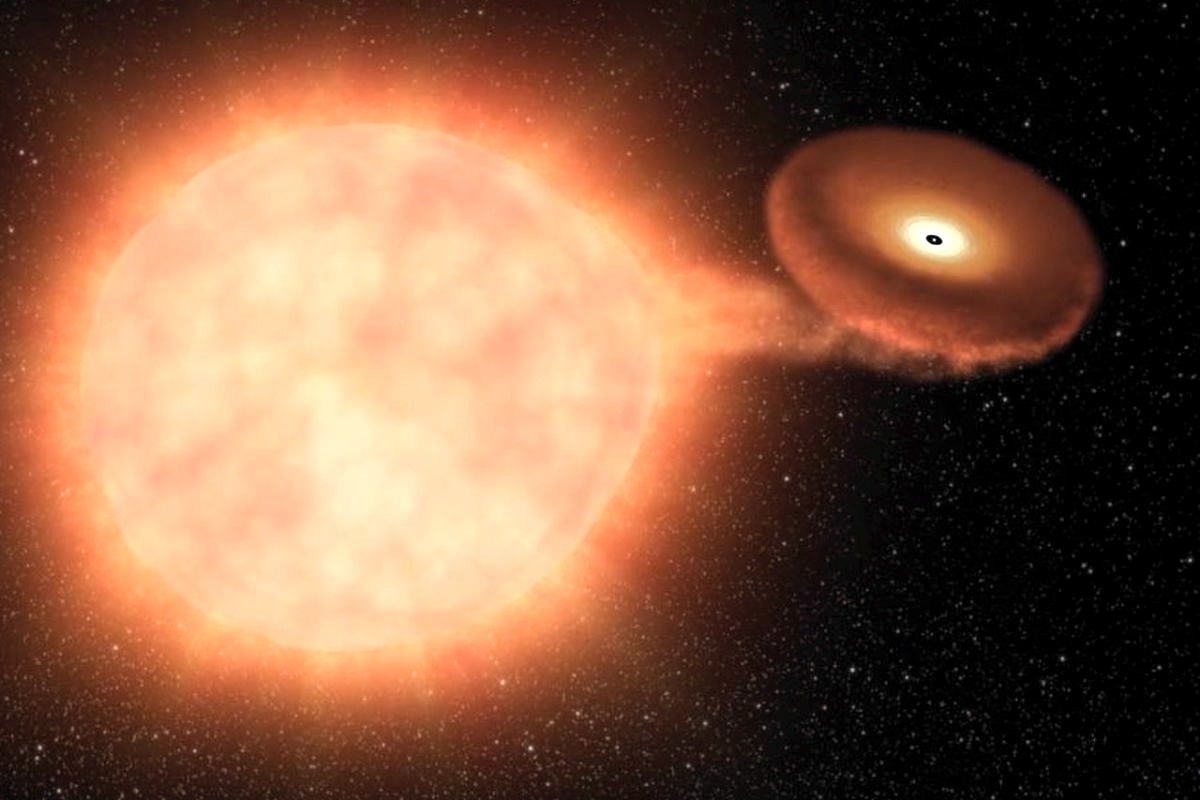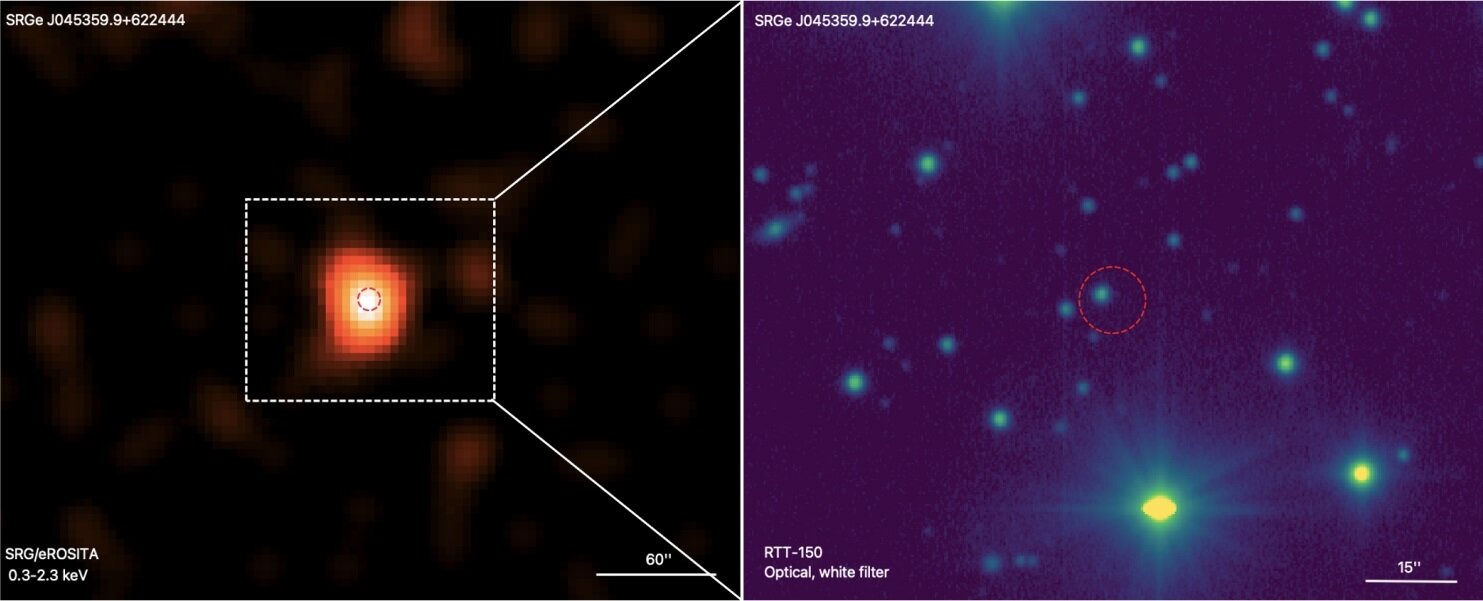With the help of the Spektr-RG spacecraft and the Zwicky Transient Facility (ZTF), an international team of astronomers discovered a new system of cataclysmic variables with eclipses, which received the designation SRGeJ045359.9+622444 (abbreviated SRGeJ0453). This is reported in an article on the arXiv preprint server.

Cataclysmic variables (CV) are binary star systems consisting of a primary white dwarf star to which matter is attracted from a companion in the form of an ordinary star. They irregularly increase the brightness many times, and then fall back to a state of rest. These binary stars have been found in many environments, such as the center of the Milky Way galaxy, or in open and globular clusters.
AM CVn stars (named after the star AM Canum Venaticorum) are a rare type of CRS in which a white dwarf accretes hydrogen-poor matter from a compact companion star. In general, such systems are helium-rich binary stars, in the spectra of which no traces of hydrogen are visible, with orbital periods from 5 to 65 minutes.
Now a group of astronomers led by Antonio Rodriguez from the California Institute of Technology (Caltech) reports the discovery of another AM CVn system as part of the joint SRG and ZTF program to detect cataclysmic variables.

According to the study, SRGeJ0453 consists of a white dwarf and a donor star, which could initially be a hydrogen star or a helium white dwarf. It was found that the donor star had a radius of about 0.078 of the radius of the Sun and a mass of about 0.044 of the mass of the Sun, while the mass of the accretor of the white dwarf was estimated at about 0.85 of the mass of the Sun. Observations have shown that SRGeJ0453 has an orbital period of 55 minutes and is located at a distance of about 780 light-years from Earth.
Astronomers have noted that the optical spectrum of SRGeJ0453 has common features for AM CVn systems. They find that all neutral helium (He I) lines have a narrow central absorption, which is usually observed in almost marginal cataclysmic variables, and AM CVn is among them.
Observations also revealed deep eclipses in the optical light curves of SRGeJ0453, as well as low-amplitude flickering, possibly caused by an accretion disk. This makes it the ninth darkened AM CVn system discovered to date. The researchers note that the SRGeJ0453 hard photon index indicates the possible magnetic nature of the CV, but further research is needed to confirm it.
According to phys.org
Follow us on Twitter to get the most interesting space news in time
https://twitter.com/ust_magazine
